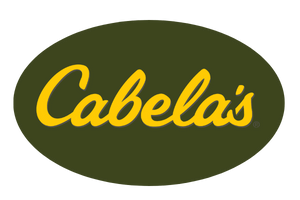The Five Core Skills of Bushcraft
Bushcraft is more than a collection of wilderness survival techniques — it’s a mindset and way of life rooted in respect for the land, traditional knowledge, and practical self-reliance. These skills are what our ancestors used to navigate wild landscapes, thrive through the seasons, and connect deeply with nature. At WildFront Adventure Co., we believe that bushcraft isn’t about roughing it — it’s about learning to live well, using what’s around you and within you.
Whether you’re building a backwoods camp, hiking off trail, or just spending time in nature more intentionally, these five core bushcraft skills lay the foundation for every other technique and tradition. Master them, and you’re well on your way to becoming confident, capable, and connected in the wild.
1. Shelter: Creating a Safe Haven
When the wind picks up and the sun dips low, your first priority is often shelter. Exposure to the elements is one of the leading causes of wilderness emergencies, especially in unpredictable northern climates. Shelter skills give you the power to stay warm, dry, and protected — with or without a tent in your pack.
Types of Natural Shelters:
- Debris Hut: A compact, insulated shelter built from sticks, leaves, and forest debris. Ideal for cold conditions.
- Lean-To: Quick to construct with a tarp or branches. Offers a windbreak and decent rain protection.
- A-Frame Shelter: Stable and adaptable — often used with a ridgepole and supported by sturdy limbs or cordage.
- Snow Cave or Quinzee: Winter-only shelters that trap body heat surprisingly well when built right.
Key Principles of Shelter Building:
- Location: Always choose high ground away from potential flood zones, deadfall, and animal trails.
- Insulation: In cold weather, ground insulation is just as important as roofing. Use pine boughs, dry grass, or spruce branches.
- Structure: Learn to build frames with notches, lashings, or friction-fitted joints using your bushcraft knife or axe.
Even in summer, a well-built shelter can make the difference between a good night’s sleep and a miserable night of exposure. Practicing shelter builds during different seasons will increase your adaptability and confidence in varied conditions.
2. Firecraft: Mastering the Flame
Fire is the beating heart of a bushcraft camp. It cooks your food, boils your water, keeps you warm, lights the dark, and lifts your spirits. But fire is more than flicking a lighter — it’s a craft rooted in knowledge, preparation, and respect for the elements.
Fire Starting Methods:
- Ferro Rod: Reliable and nearly weatherproof, this tool can produce thousands of sparks. Learn how to pair it with fine tinder like birch bark or feathersticks.
- Bow Drill: A primitive method that teaches patience and precision. Mastering it connects you deeply with the friction fire process.
- Flint & Steel: A traditional fire-starting method using charcloth and high-carbon steel to catch sparks.
Essential Firecraft Skills:
- Gathering and identifying natural tinders: cattail fluff, dried grasses, birch bark, and pine resin.
- Building fire lays for different purposes — long log fires for heat, teepee fires for fast ignition, and Dakota fire holes for stealth and efficiency.
- Managing fire safely: choosing the right site, understanding wind direction, and always practicing Leave No Trace principles.
Practicing fire in all weather conditions is key. Make it a habit to light a fire in the rain — that’s when the skill really proves itself.
3. Water: Finding, Collecting, and Purifying
In the wild, you can’t rely on a faucet or bottled water. You need to know how to locate water sources, determine their safety, and purify what you collect. This is one of the most critical survival priorities and a central part of daily life in the bush.
Water Sources in the Wilderness:
- Surface Water: Streams, rivers, lakes, and ponds. Always downstream of contamination sources.
- Seeps & Springs: Groundwater that surfaces naturally — usually cleaner and safer than surface water.
- Snow & Ice: Can be melted, but requires fuel and time. Never eat snow directly — it drains body heat.
- Plant-Based Water: Collect dew, cut vines, or use transpiration bags on leafy trees.
Purification Techniques:
- Boiling — the gold standard: 5 minutes of rolling boil will kill most pathogens.
- Filtration — using cloth, sand, charcoal, or modern filters like the Sawyer Mini or Lifestraw.
- Solar disinfection — using clear bottles in sunlight for 6+ hours (SODIS method).
Advanced bushcrafters can build their own natural filters or even distillation rigs using hot rocks and improvised containers. But at its core, the skill is about knowing what’s safe — and never taking water for granted.
4. Food: Foraging, Hunting, and Cooking
In a survival situation, food might not be your first priority — but in bushcraft, it’s about more than just calories. It’s about forming a relationship with the landscape, understanding seasonal abundance, and respecting the sources of your nourishment.
Foraging Wild Edibles:
- Plants: Dandelion, yarrow, fireweed, plantain, wild mint, and Labrador tea are great starting points.
- Fruits & Berries: Wild blueberries, raspberries, cranberries, and Saskatoon berries are common in many Canadian regions.
- Fungi: Chanterelles, morels, and puffballs — only harvest if 100% sure. Never guess.
Fishing and Primitive Trapping:
- Learn to make and set basic traps: figure-4 deadfalls, spring snares, Paiute deadfalls.
- Use hand lines, gorge hooks, or spears for small game fishing.
- Understand local laws and ethical harvesting techniques.
Cooking in the Wild:
- Cook over coals using flat rocks, green wood grills, or pot-hanging rigs.
- Make bannock, roast fish, or simmer wild tea using basic bush tools.
- Explore preservation methods like smoking, drying, and wrapping food in bark or clay.
Food becomes a deeper experience when you’ve gathered it yourself, built the fire to cook it, and shared it around a flame-lit camp. It’s nourishment of body and spirit alike.
5. Tools & Craft: Building and Maintaining Your Kit
In the hands of a bushcrafter, tools are more than gear — they’re extensions of knowledge and tradition. Knowing how to use, maintain, and even create your own tools is a core skill that sets bushcraft apart from casual camping.
Essential Bushcraft Tools:
- Knife: Your number-one tool. Look for a fixed-blade, full-tang model with a 90-degree spine.
- Axe: Ideal for splitting wood, felling small trees, and rough shaping materials.
- Saw: A folding saw or bucksaw is efficient for clean cuts and processing firewood.
Tool Skills to Master:
- Knife carving techniques: notches, feathersticks, and basic traps
- Axe safety and chopping: creating kindling and log processing
- Sharpening and stropping: keeping edges ready and clean
Craft Projects:
- Build a simple pot hanger or campfire tripod
- Carve tent pegs, mallets, and toggles from green wood
- Make natural cordage from bark, grass, or sinew
Creating something useful with your hands — from a cooking rig to a woven mat — adds value, self-reliance, and satisfaction to your bushcraft journey. It’s where ancient skill meets modern need.
Final Thoughts: The Wild Teaches
These five core bushcraft skills — shelter, fire, water, food, and tools — are the building blocks of wild living. They’re not just about emergencies or survival. They’re about slowing down, learning to see, and becoming part of the land instead of just passing through it.
As you practice and grow, you’ll start to see how these skills interconnect. A well-made shelter needs cordage you’ve crafted. A fire requires the right tinder and a blade sharp enough to shave it. The water you boil over your fire may have come from a stream you tracked down at dawn. In bushcraft, nothing is wasted, and everything has its place.
So start small. Learn often. Fail forward. The wild doesn’t hand out medals — but it does reward those who listen, learn, and live with intention.
At WildFront, we’re proud to carry the torch of traditional knowledge and modern adventure. Whether you’re new to the trail or a seasoned woodsman, our goal is the same: to help you build the skills, confidence, and connection to journey beyond the last mile marker.








